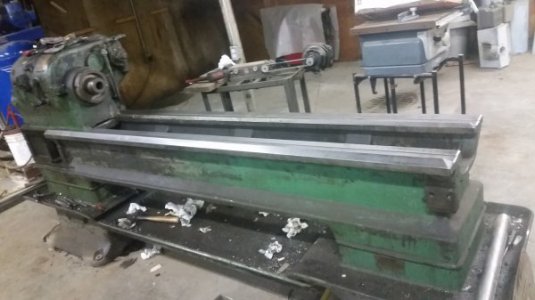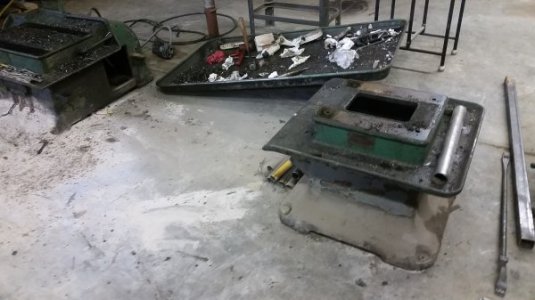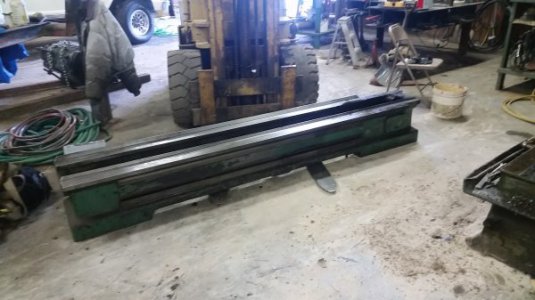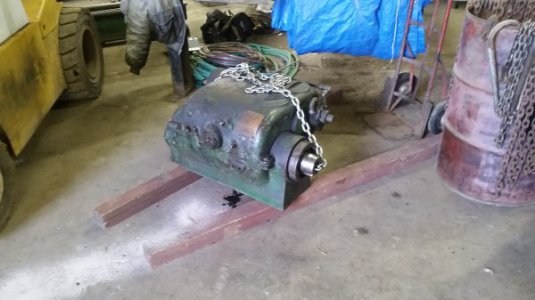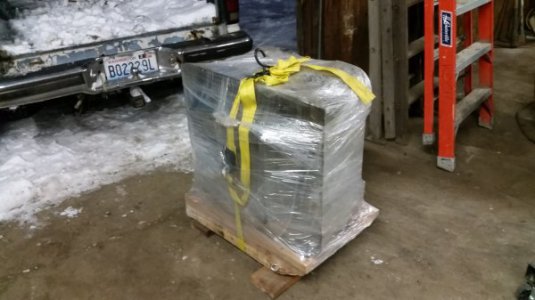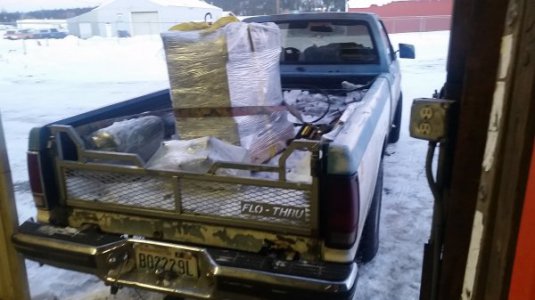- Joined
- Mar 31, 2014
- Messages
- 49
I hired a steel decked rollback for 200 bucks to move my Holbrook. It weighs in around 5800 pounds and the truck had no problems pulling it up the deck, or sliding it back off. Mine has continuous rails for the base feet so pipe rollers to get it in position for pickup made it a breeze.Please don't take thy wife!!! Unless she likes machinery too. That could turn into a no deal! Cash does entertain.
Good point brought up, moving the beast! Your looking at around 5,000 to 6,000 lbs there. This kind of weight does not move around easily. If you have the equipment to move it that's fine. But if you don't, be careful there. Things to consider is how are you going to load it, if you have a trailer? If you don't have a trailer, look at hiring a roll back tow truck to pick it up and take it to your location and unload for you. If the seller has this tucked away into a room with no opening to the outside to drag it out of, I would pass on it. Ken
Britt Bettell
Sent from my Samsung Galaxy S7 using Tapatalk.


